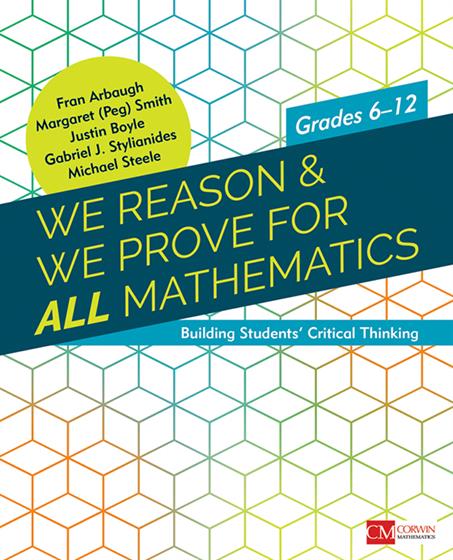Preface
Acknowledgements
About the Authors
Chapter 1 Setting the Stage
Are Reasoning and Proving Really What You Think?
Supporting Background and Contents of This Book
What is Reasoning and Proving in Middle and High School Mathematics?
Realizing the Vision of Reasoning-and-Proving in Middle and High School Mathematics
Discussion Questions
Chapter 2 Convincing Students Why Proof Matters
Why Do We Need to Learn How To Prove?
The Three Task Sequence
Engaging in the Three Task Sequence, Part 1: The Squares Problem
Engaging in the Three Task Sequence, Part 2: Circle and Spots Problem
Engaging in the Three Task Sequence, Part 3: The Monstrous Counterexample
Analyzing Teaching Episodes of the Three Task Sequence: The Cases of Charlie Sanders and Gina Burrows
Connecting to Your Classroom
Discussion Questions
Chapter 3 Exploring the Nature of Reasoning-and-Proving
When is an Argument a Proof?
The Reasoning-and-Proving Analytic Framework
Developing Arguments
Developing a Proof
Reflecting on What You’ve Learned about Reasoning and Proving
Revisiting the Squares Problem from Chapter 2
Connecting to Your Classroom
Discussion Questions
Chapter 4 Helping Students Develop the Capacity to Reason-and-Prove
How Do You Help Students Reason and Prove?
A Framework for Examining Mathematics Classrooms
Determining How Student Learning is Supported: The Case of Vicky Mansfield
Determining How Student Learning is Supported: The Case of Nancy Edwards
Looking Across the Cases of Vicky Mansfield and Nancy Edwards
Connecting to Your Classroom
Discussion Questions
Chapter 5 Modifying Tasks to Increase the Reasoning-and-Proving Potential
How Do You Make Tasks Reasoning-and-Proving Worthy?
Returning to the Effective Mathematics Teaching Practices
Examining Textbooks or Curriculum Materials for Reasoning-and-Proving Opportunities
Revisiting the Case of Nancy Edwards
Continuing to Examine Tasks and Their Modifications
Re-Examining Modifications Made to Tasks Through a Different Lens
Comparing More Tasks with their Modifications
Strategies for Modifying a Task to Enhance Students’ Opportunities to Reason-and-Prove
Connecting to Your Classroom
Discussion Questions
Chapter 6 Using Context to Engage in Reasoning-and-Proving
How Does Context Affect Reasoning-and-Proving?
Considering Opportunities for Reasoning-and-Proving
Solving the Sticky Gum Problem
Analyzing Student Work from the Sticky Gum Problem
Analyzing Two Different Classroom Enactments of the Sticky Gum Problem
Connecting to Your Classroom
Discussion Questions
Chapter 7 Putting it All Together
Key Ideas at the Heart of this Book
Tools to Support the Teaching of Reasoning-and-Proving
Putting the Tools to Work
Moving Forward in Your PLC
Discussion Questions
Appendix A Developing a Need for Proof: The Case of Charlie Sanders
Appendix B Motivating the Need for Proof: The Case of Gina Burrows
Appendix C Writing and Critiquing Proofs: The Case of Vicky Mansfield
Appendix D Pressing Students to Prove It: The Case of Nancy Edwards
Appendix E Making Sure that All Students Understand: The Case of Calvin Jenson
Appendix G Helping Students Connect Pictorial and Symbolic Representations: The Case of Natalie Boyer
References







